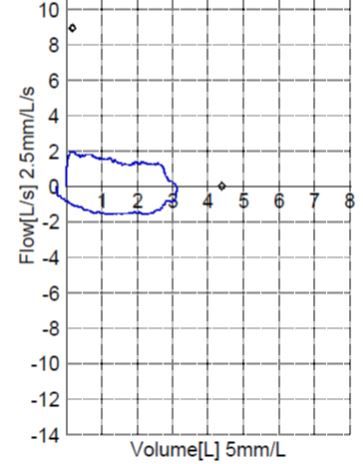Worsening Respiratory Symptoms in an Adult Male
The patient presents 6 weeks after a prolonged hospitalization for pancreatitis. More details and the office spirometry tracing here.
Figure 1. In-office spirometry tracing.

A 56-year-old man, Mr A, comes to your office 6 weeks after a long hospitalization for severe pancreatitis secondary to gallbladder disease. During that admission, acute respiratory distress syndrome and respiratory failure developed and the patient was intubated for 9 days. A large pancreatic fluid collection also developed while he was hospitalized and has caused noticeable abdominal swelling and pain. Since his hospital discharge, he has noticed worsening shortness of breath, which has increased markedly over the past week, with associated wheezing. He has no previous history of COPD or asthma and has never smoked cigarettes.
On physical examination, you note wheezing throughout his chest, and he is in moderate respiratory distress. You perform spirometry, which produces the flow volume loop shown in Figure 1. (Click figure to enlarge.)
Question 1: What does the flow volume loop show?
A. Obstructive pattern
B. Restrictive pattern
C. Normal pattern
D. Variable expiratory upper airway obstruction
E. Fixed upper airway obstruction
Question 2: What is the most likely cause of this patient’s dyspnea?
A. Deconditioning from previous illness
B. Adult-onset asthma
C. Cardiac asthma
D. Tracheal stenosis from prolonged intubation
Please leave leave your selection and rationale below.
For answers and discussion, click here.